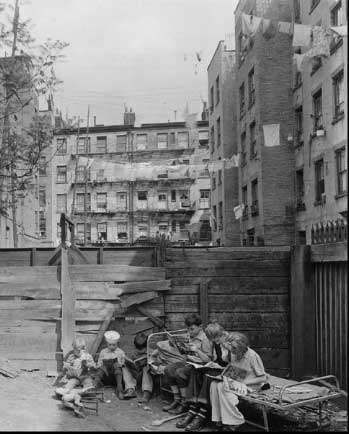

The constant growth of New York, but particularly Manhattan, came to an end in the 1910s and 1920s due to several factors: strict immigration quotas severely curtailed the number of immigrants entering the United States; economic changes led to a decrease in manufacturing; and the expanding subway system allowed the second and third generation descendents of earlier immigrants to move away from the congested tenements of Manhattan to newer apartments in the Bronx, Brooklyn and Queens. As a result, Manhattan lost 500,000 inhabitants by 1930.
The impact of such a decline in population was felt strongly in Rose Hill and Kips Bay. The large Manhattan tenement district that ran from the Lower East Side to Yorkville lost 32 percent of its population from 1920 to 1930. In Rose Hill and Kips Bay, the blocks between 24th and 28th Streets, First and Third Avenues, lost nearly 24 percent of their population over a twenty year period from 1920 to 1940. The effect was to reduce the congestion in the area, but a consequence of this was the decay of tenements that landlords found more difficult to rent. The historically poor tenements east of Second Avenue declined even further.
The changing economic situation saw the movement of manufacturers out of Manhattan during this period, and Rose Hill and Kips Bay was the site of an increasing number of abandoned commercial structures. Several were demolished, including the Carl Shultz Bottling Plant that stood on First Avenue between 25th and 26th Streets. A soda plant had stood on this site since one of the first such plants in the United States was established here in the 1830s.